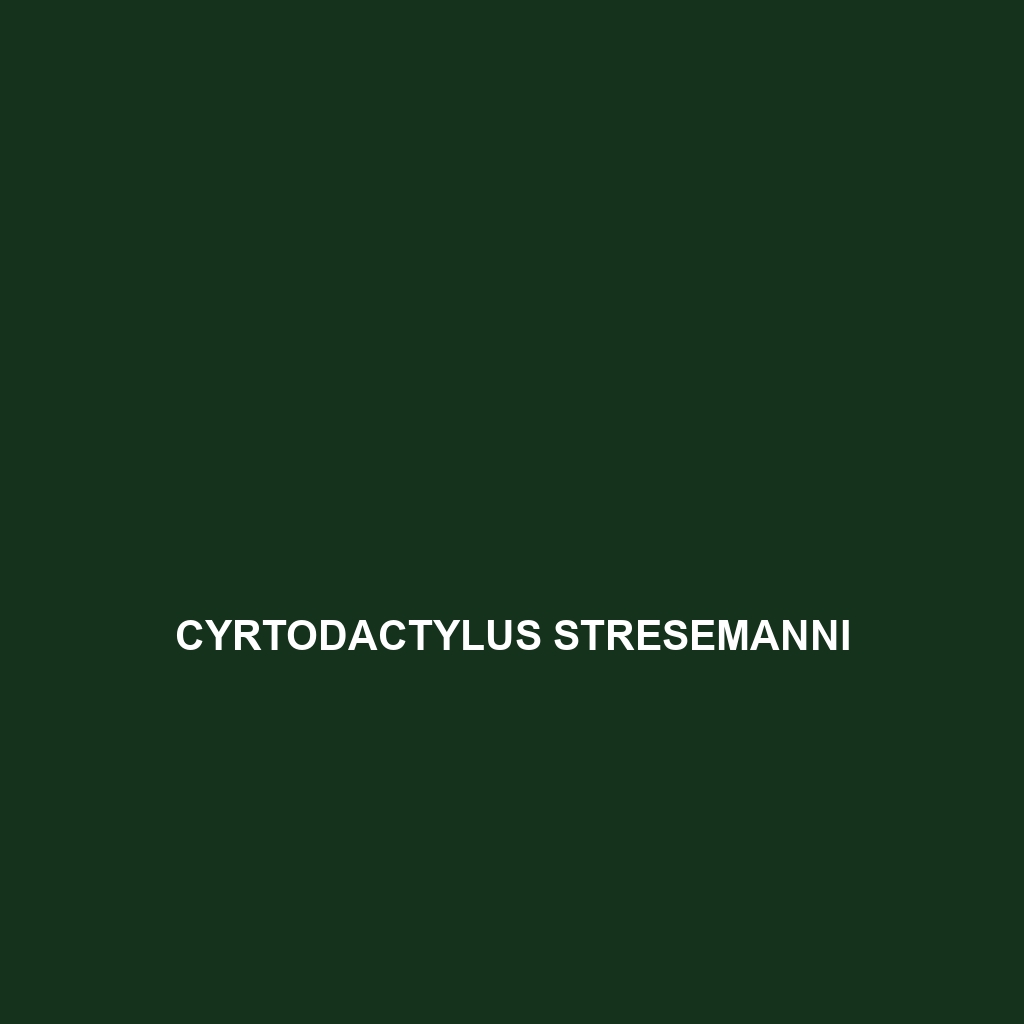Cyrtodactylus stresemanni – Species Overview
Common Name: Cyrtodactylus stresemanni
Scientific Name: Cyrtodactylus stresemanni
Habitat
Cyrtodactylus stresemanni is primarily found in the tropical forests of Southeast Asia, particularly in regions of Malaysia and Sumatra. This gecko inhabits moist environments, including lowland rainforests and primary forests where humidity levels are high. Its preference for areas with abundant leaf litter provides essential cover and hunting grounds.
Physical Characteristics
This species can grow to a length of approximately 15 to 20 centimeters. Cyrtodactylus stresemanni features a distinct coloration, displaying shades of brown and gray with intricate patterns that provide camouflage against the bark and leaf litter. Its relatively stocky body and large, bulging eyes make it a remarkable specimen. The presence of small tubercles along its sides serves as a unique identifier, adding to its fascinating appearance.
Behavior
Cyrtodactylus stresemanni is primarily nocturnal, making it active during the night to forage for food and avoid daytime predators. This species is known for its agile climbing abilities and can often be seen scaling trees and branches. Additionally, they exhibit territorial behavior, with males often engaging in displays to ward off other males that encroach on their space.
Diet
The diet of Cyrtodactylus stresemanni consists mainly of insects, including crickets, beetles, and other small invertebrates. They are opportunistic feeders, using their keen eyesight and agile movements to snatch prey from both ground and foliage. The availability of food sources within their rainforest habitat plays a critical role in their survival and overall health.
Reproduction
Cyrtodactylus stresemanni typically breeds during the wet season, with mating occurring from May to August. After a gestation period, females lay clutches of 2 to 4 eggs in hidden locations within the leaf litter to protect them from predators. The eggs hatch after approximately two months, with young geckos displaying similar coloration and patterns as adults.
Conservation Status
The current conservation status of Cyrtodactylus stresemanni is classified as Vulnerable by the International Union for Conservation of Nature (IUCN). Habitat loss due to deforestation and land conversion for agriculture poses a significant threat to their populations. Conservation efforts are necessary to ensure the survival of this species in its natural environment.
Interesting Facts
Cyrtodactylus stresemanni is named after the renowned German herpetologist Hans Hermann Carl Ludwig Stresemann. Despite its relatively small size, it plays a crucial role in the ecosystem as both predator and prey, contributing to the balance within its habitat. Its elusive nature makes it a subject of interest for researchers studying tropical biodiversity.
Role in Ecosystem
This gecko species serves as an important predator within its ecosystem, regulating insect populations and maintaining ecological balance. Furthermore, Cyrtodactylus stresemanni acts as prey for various birds and mammals, indicating its integral role in the food web. The health of its population reflects the overall health of rainforest ecosystems in which it resides.
